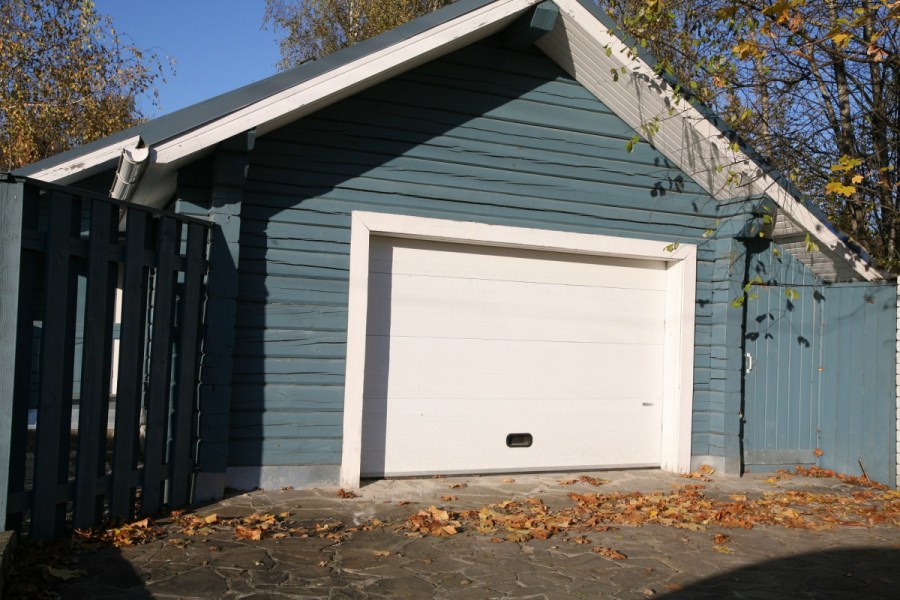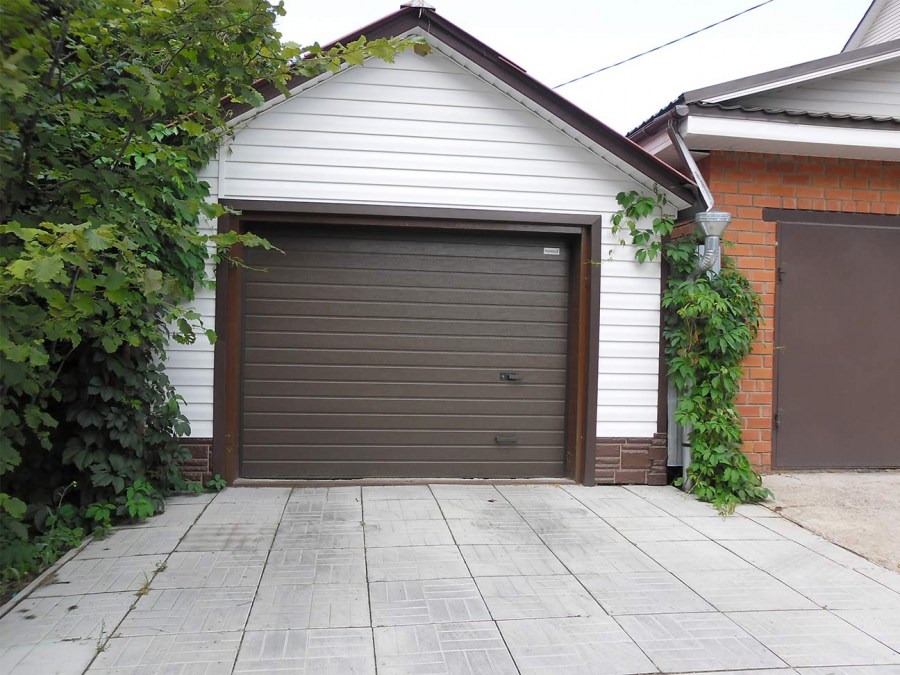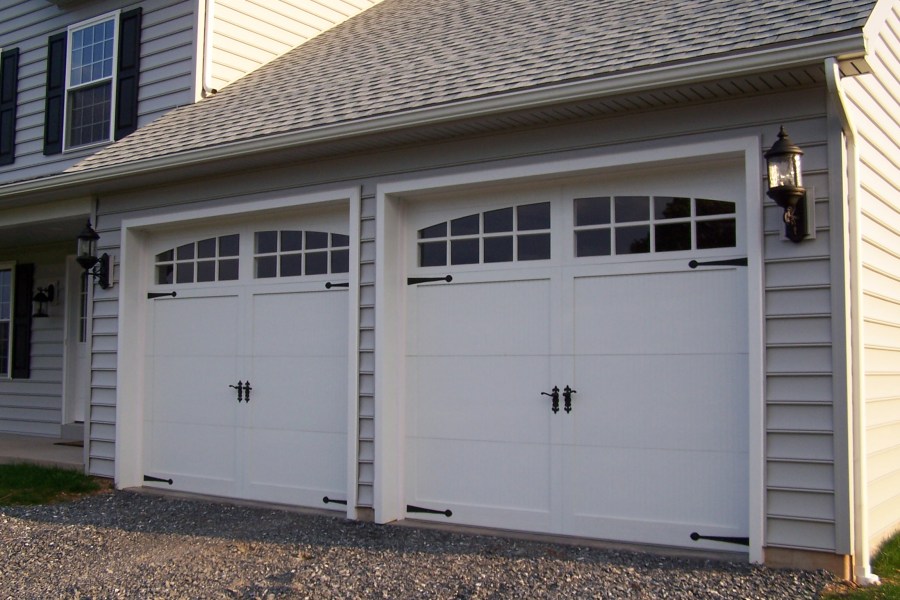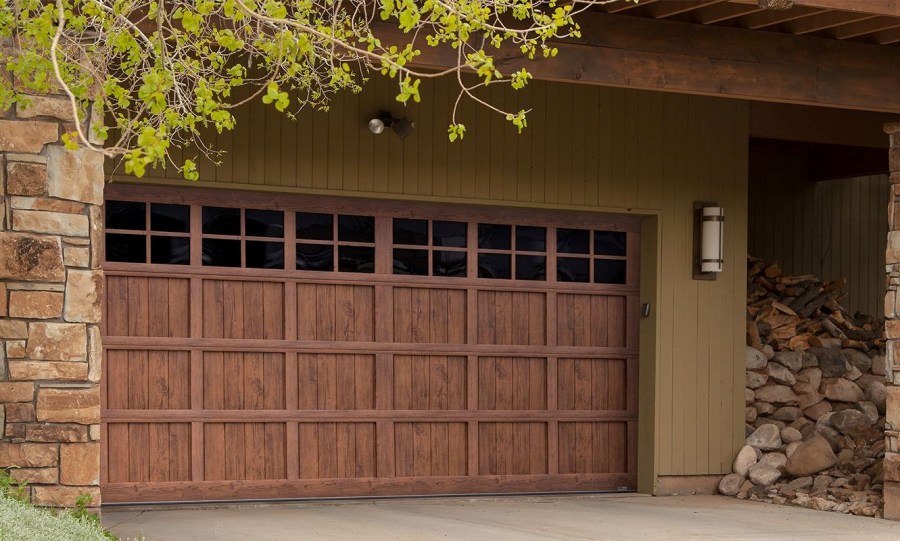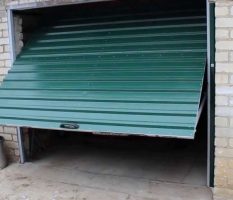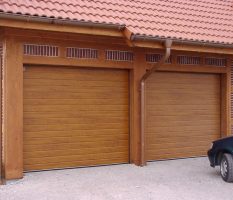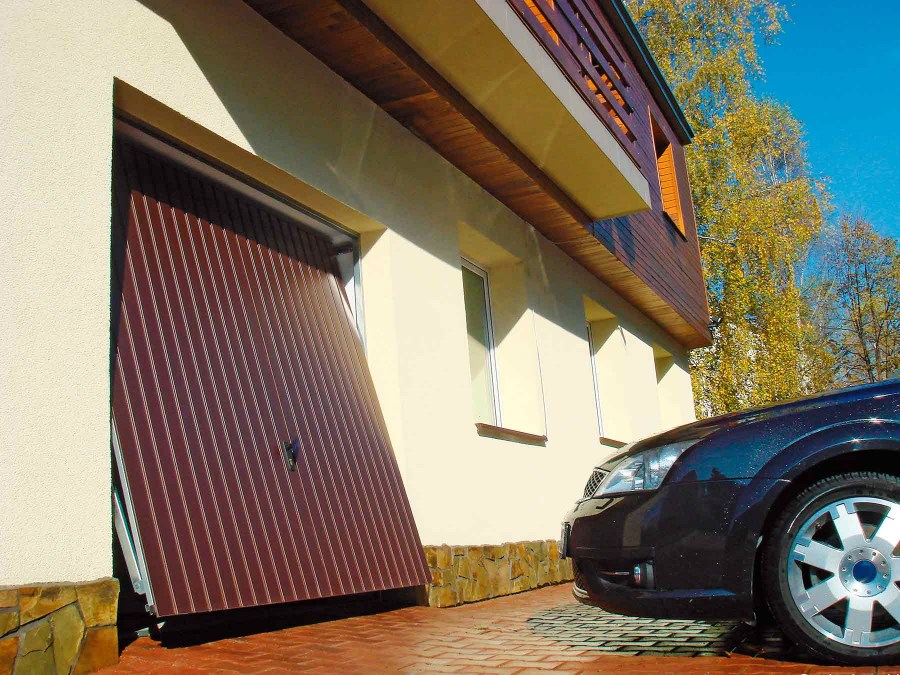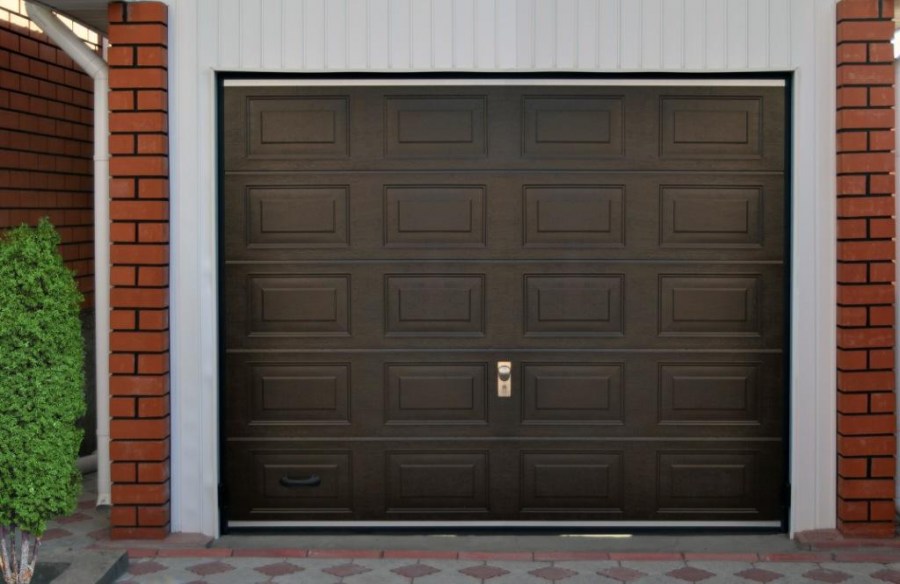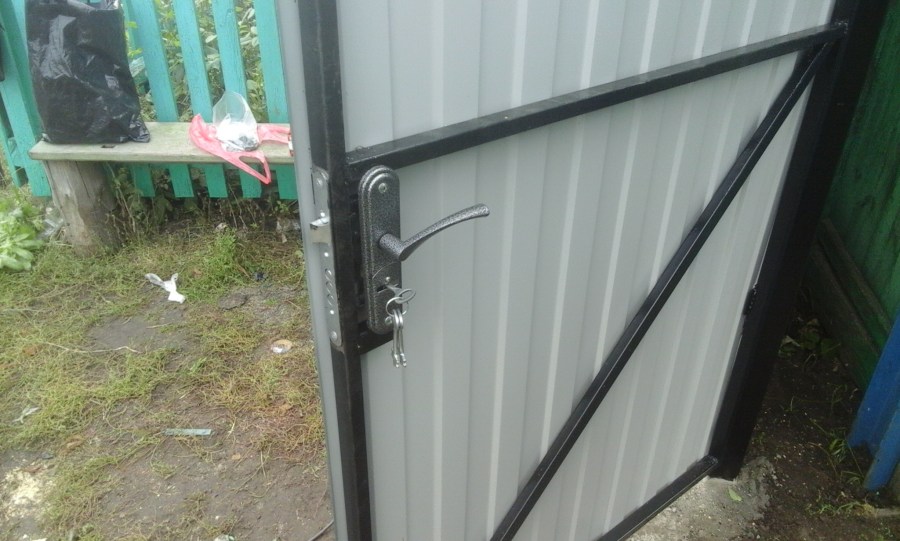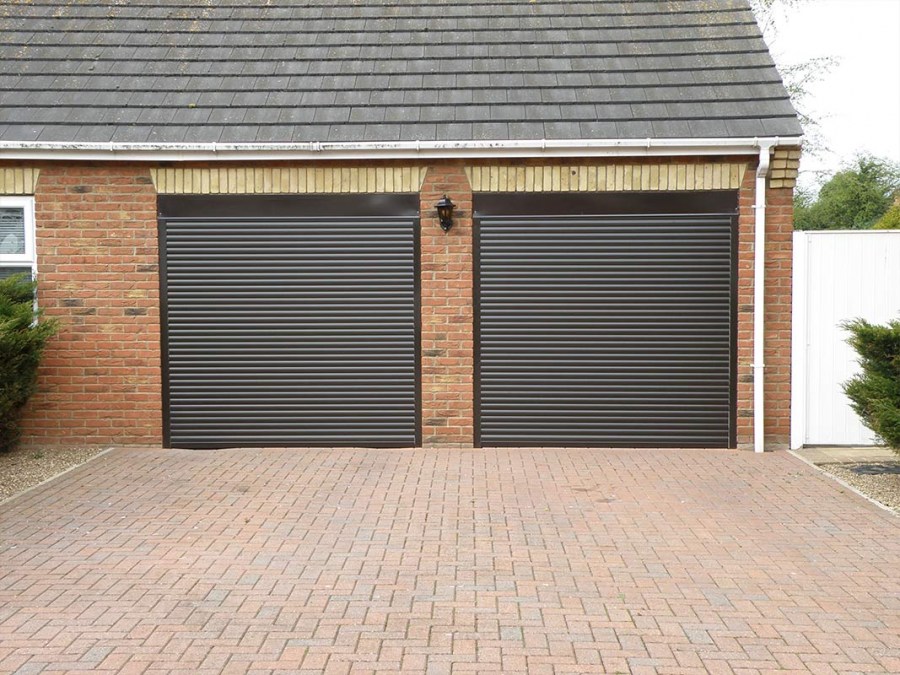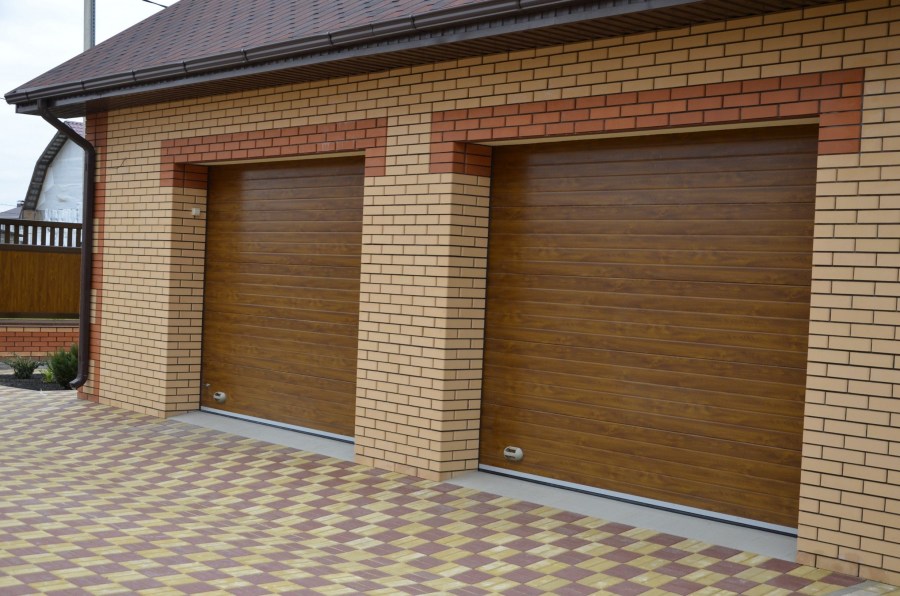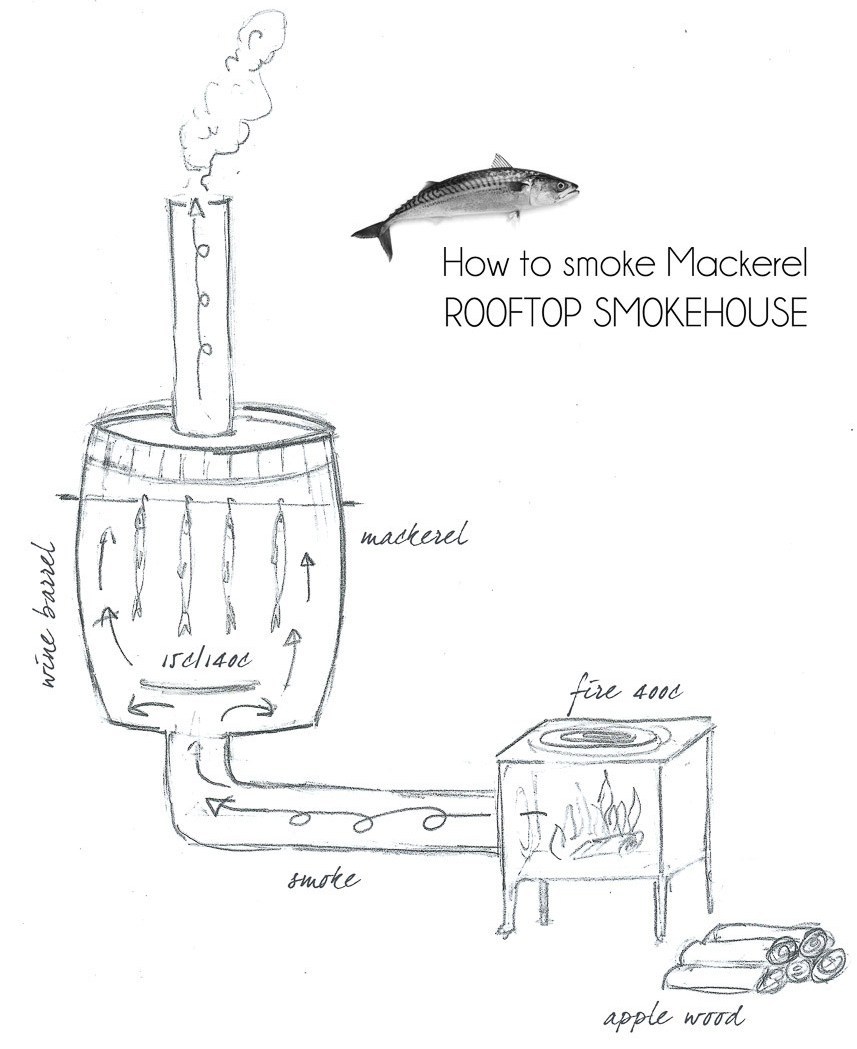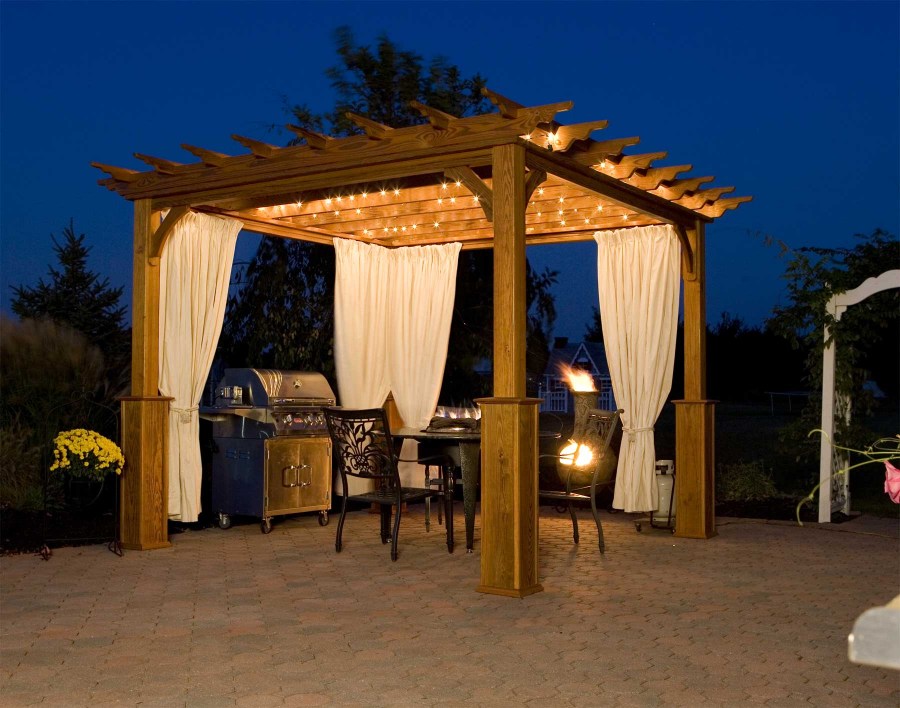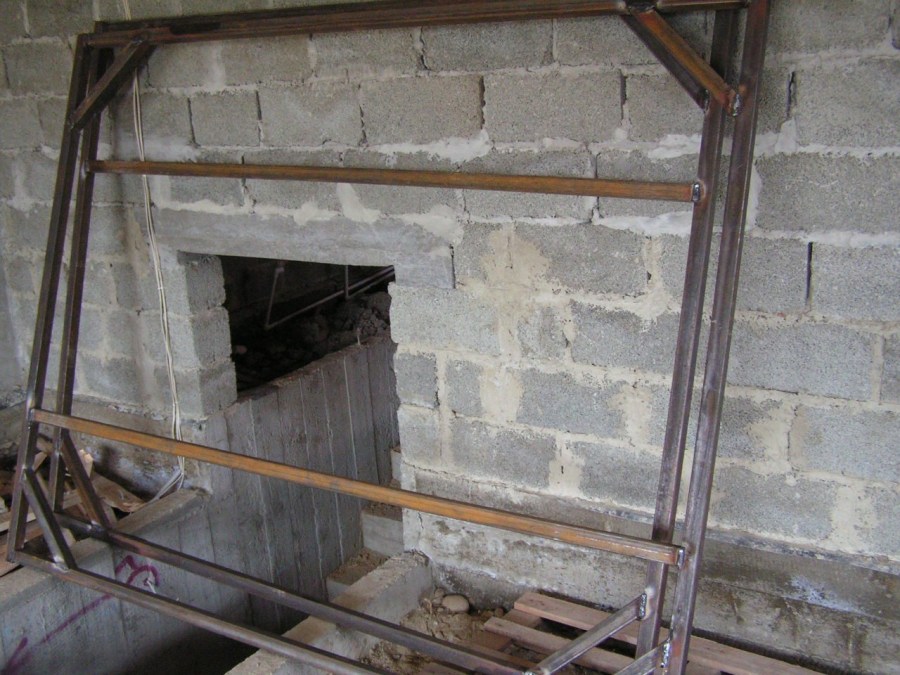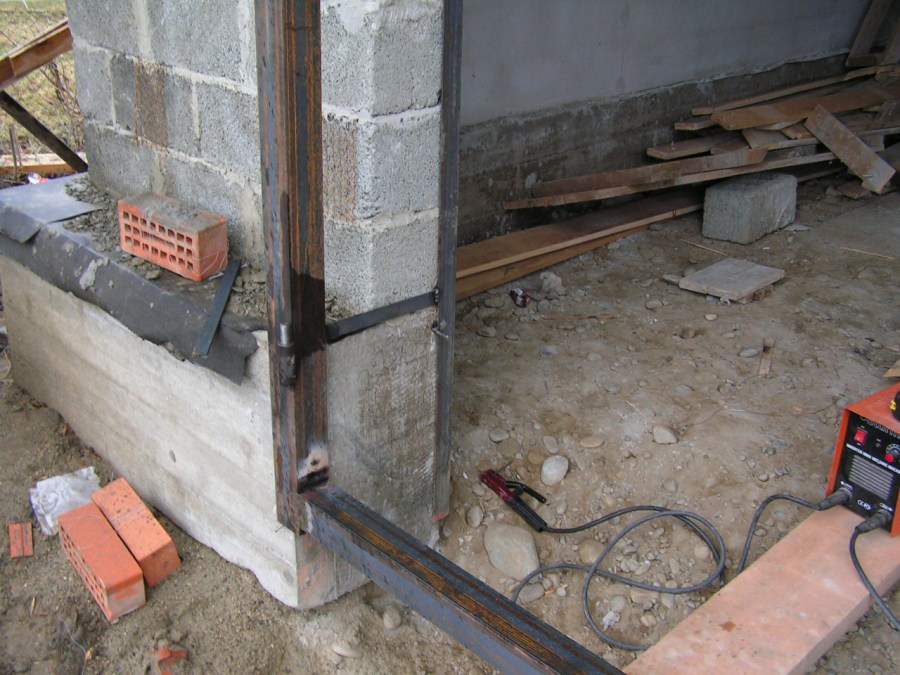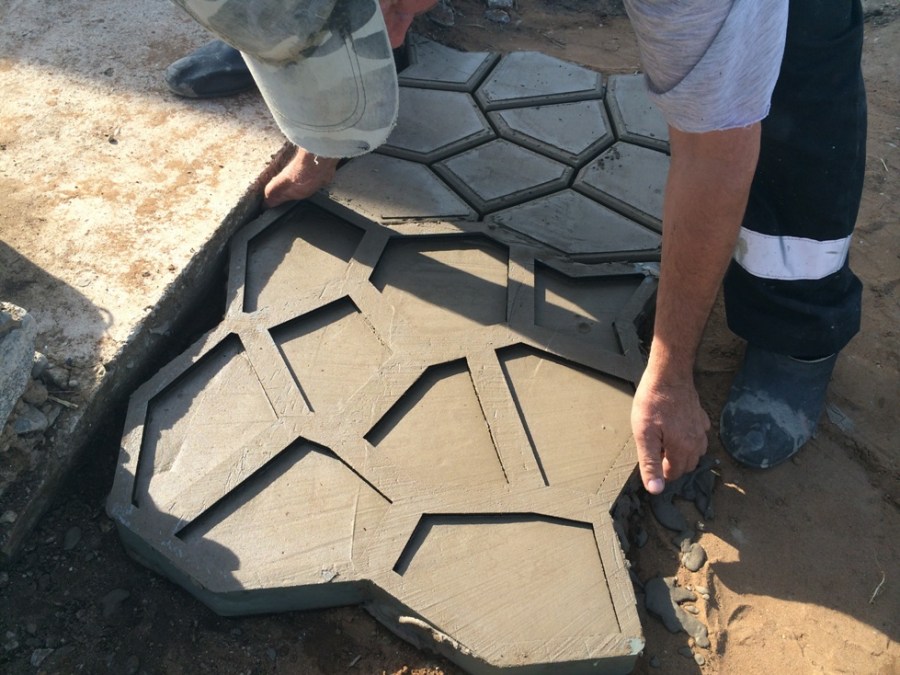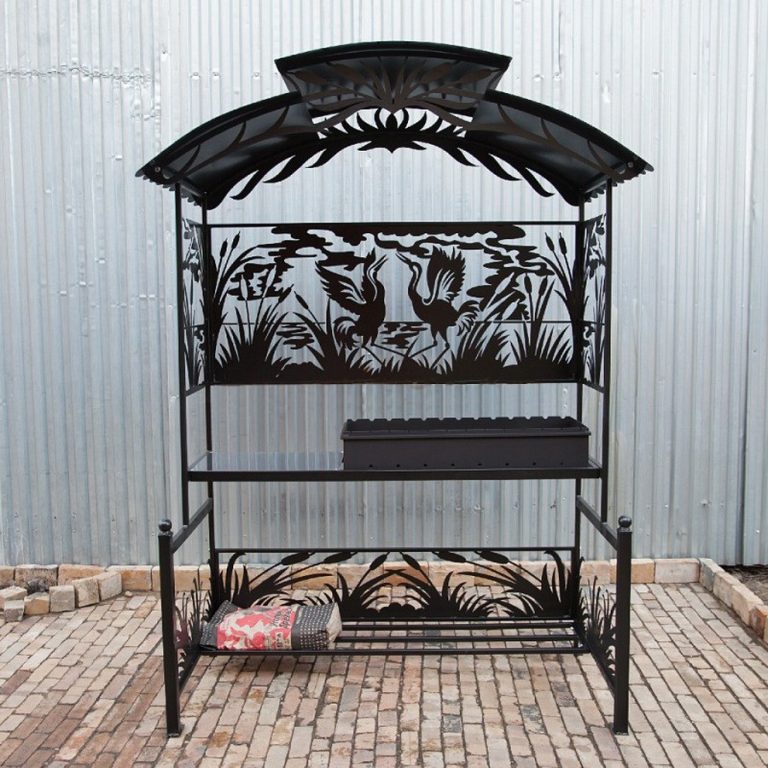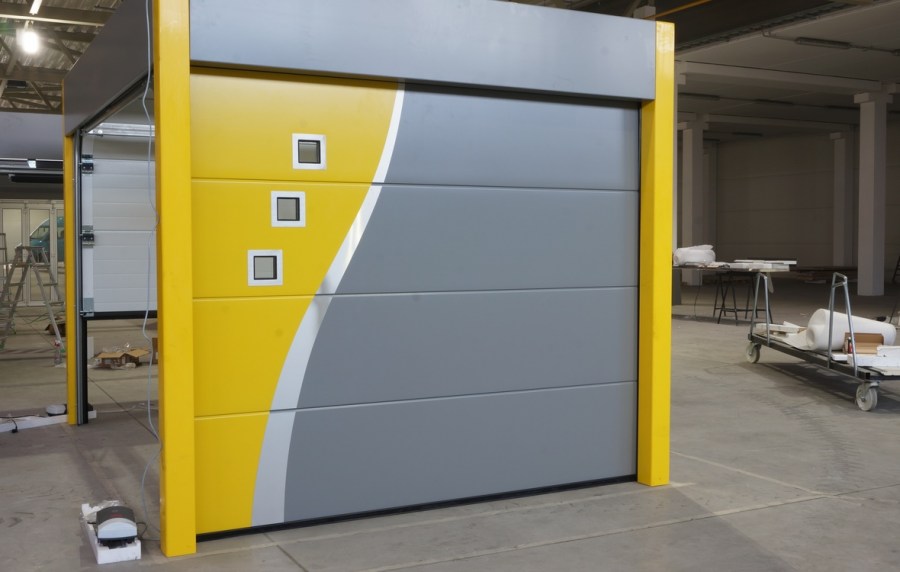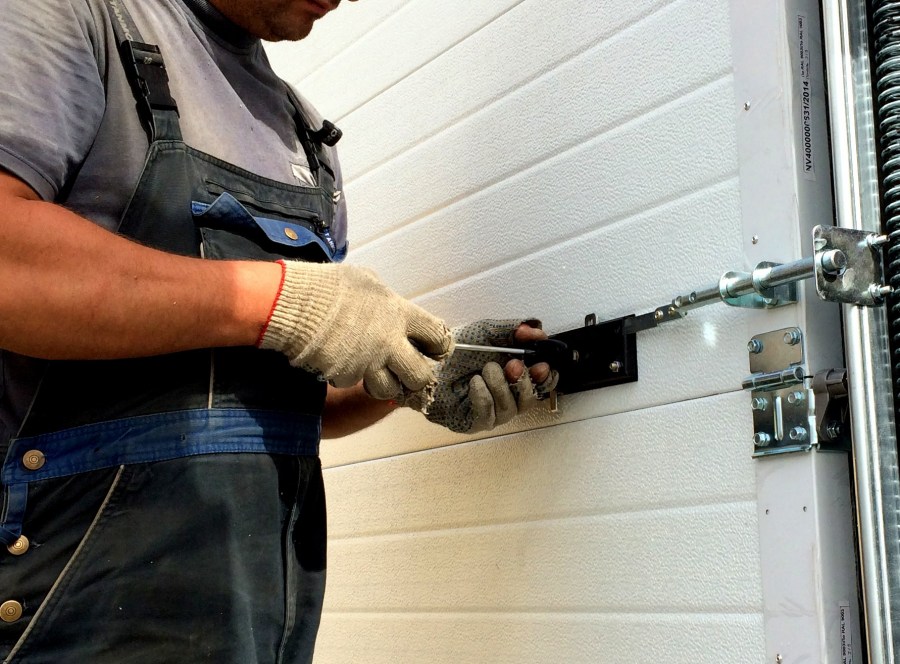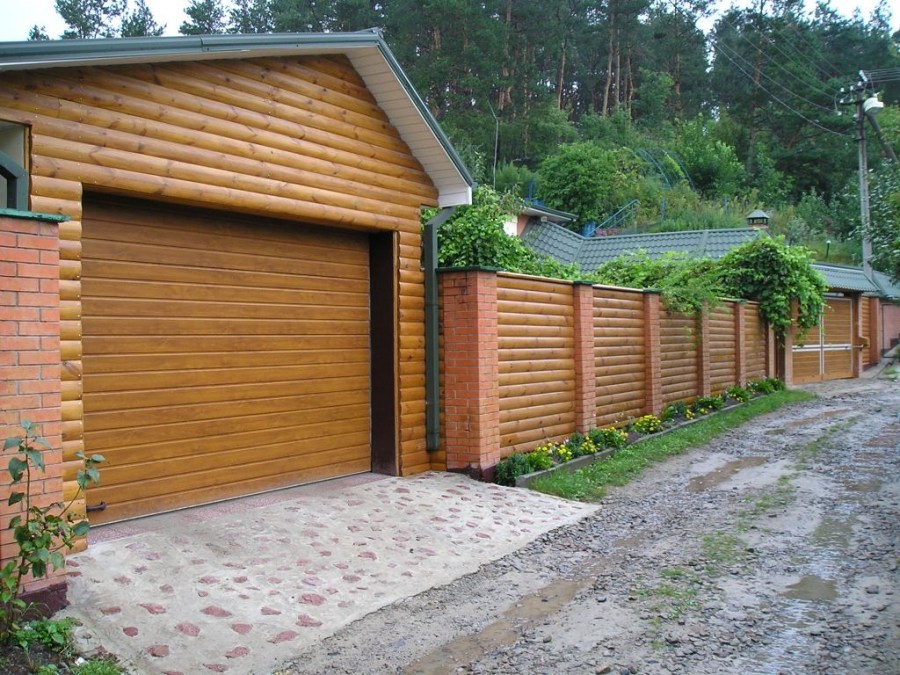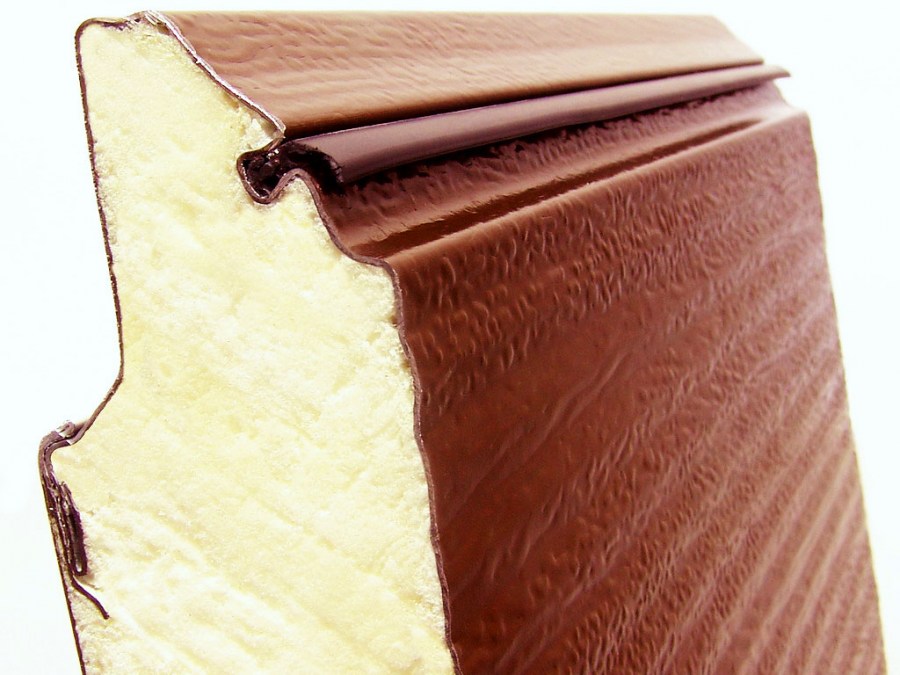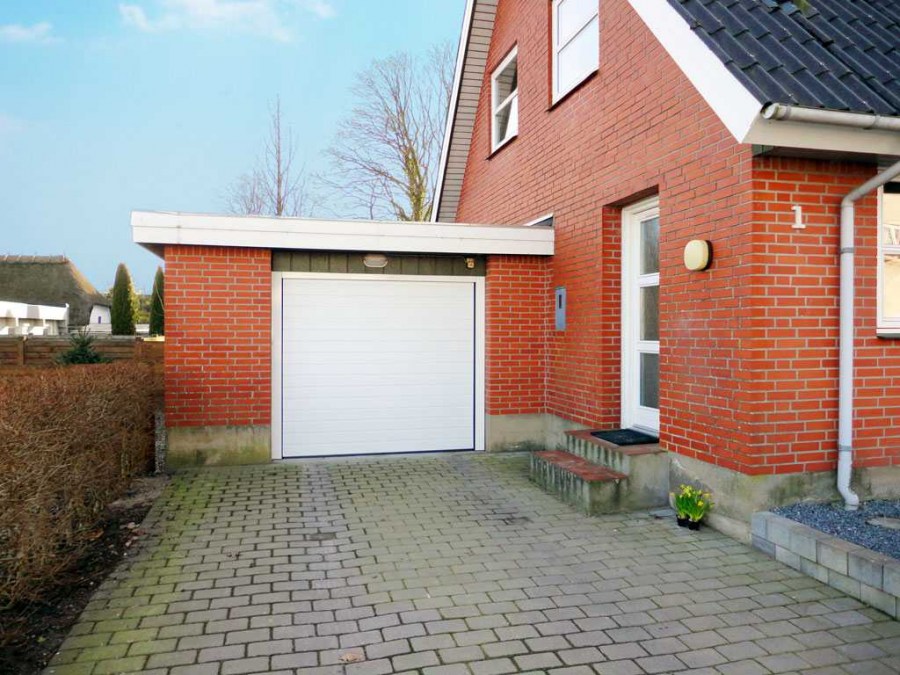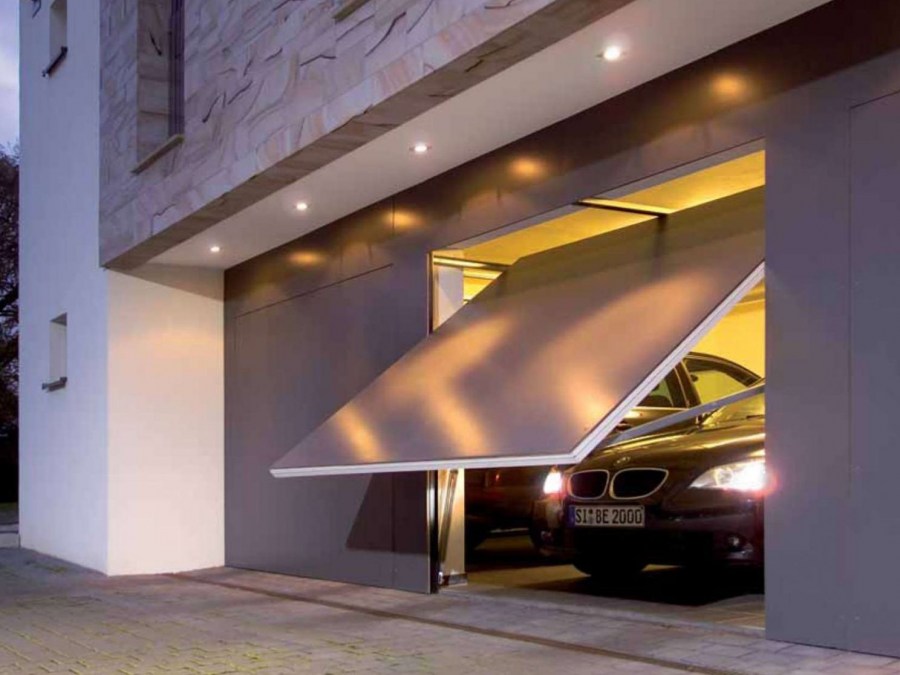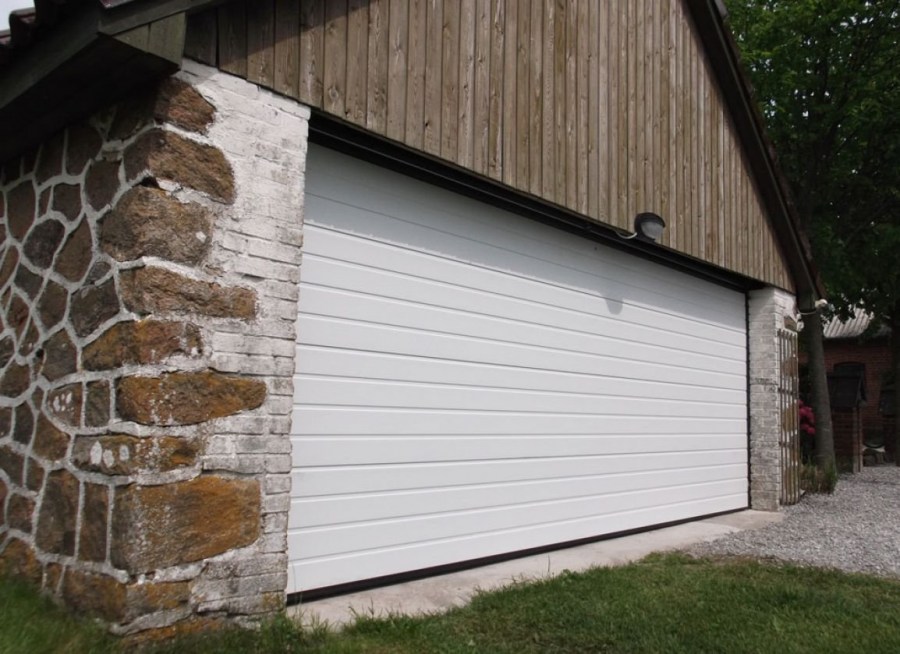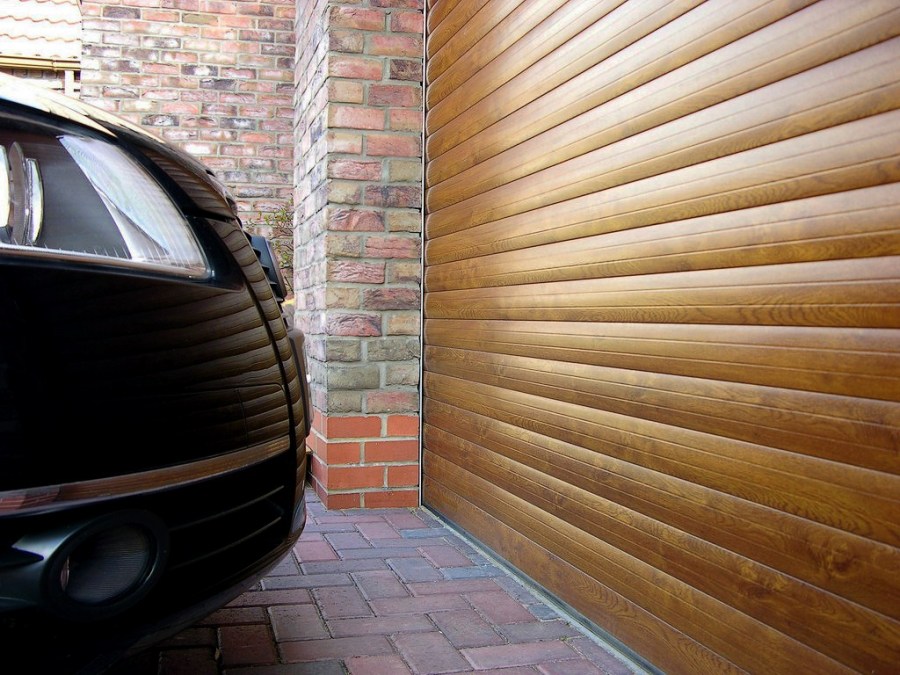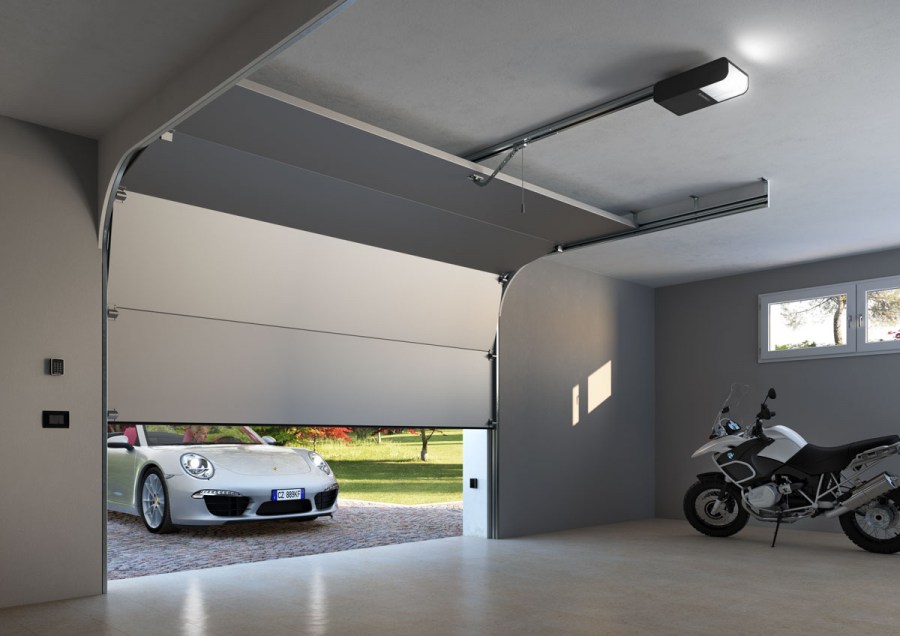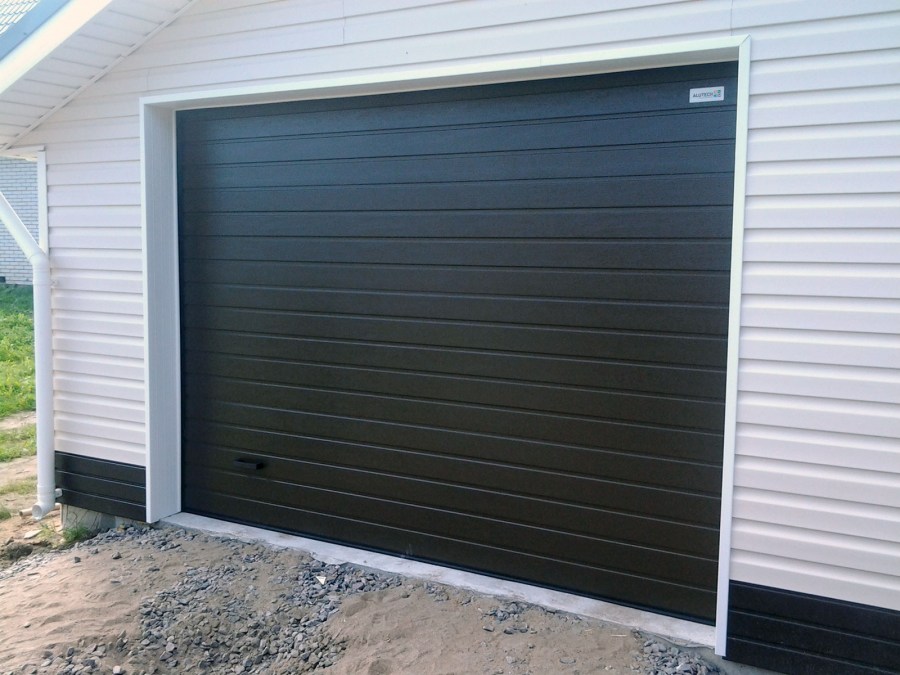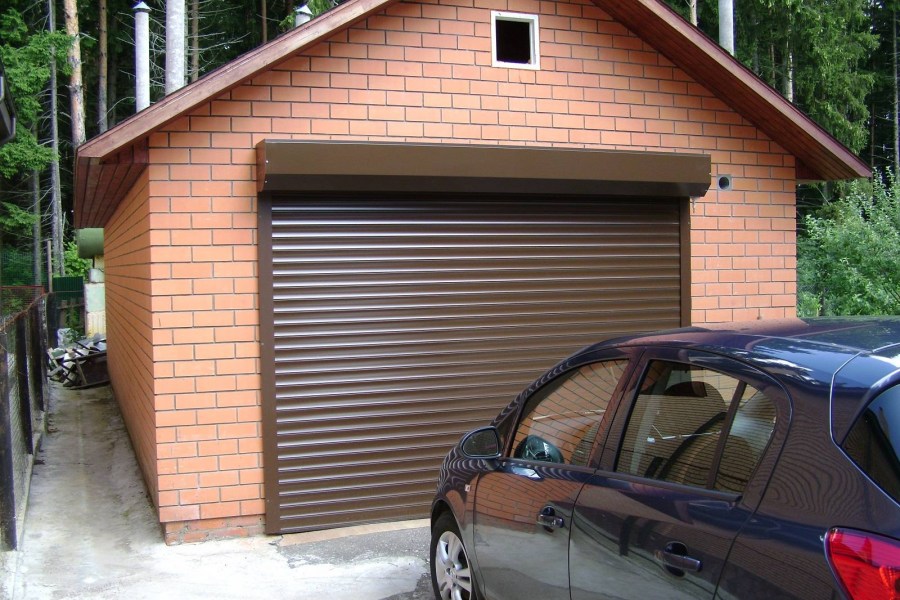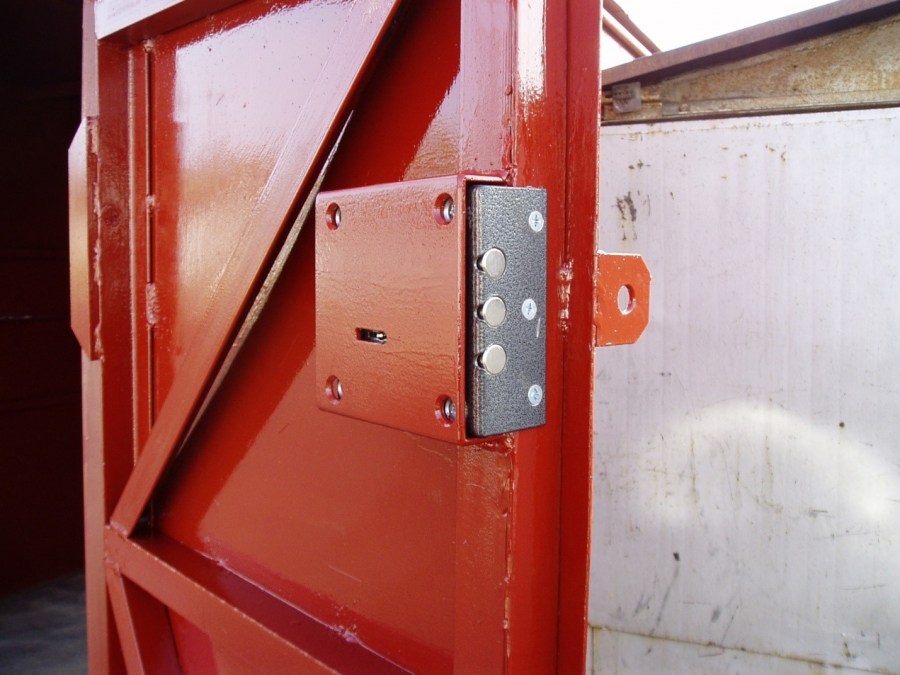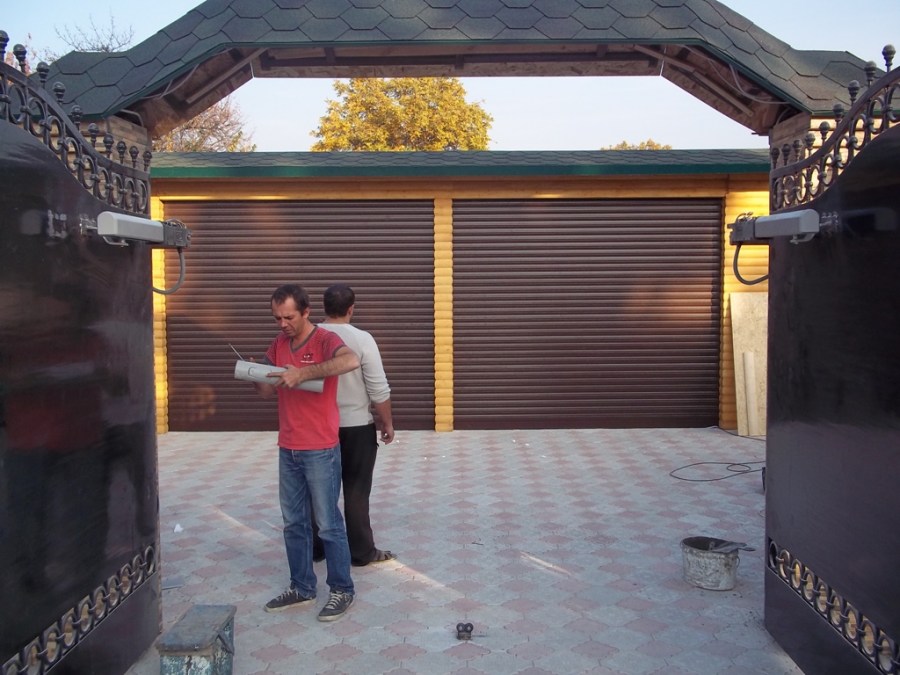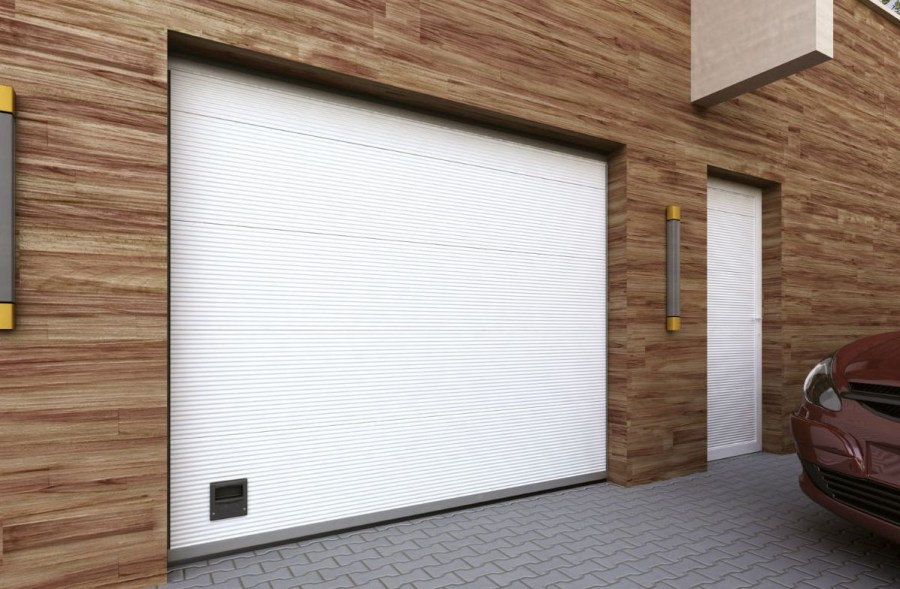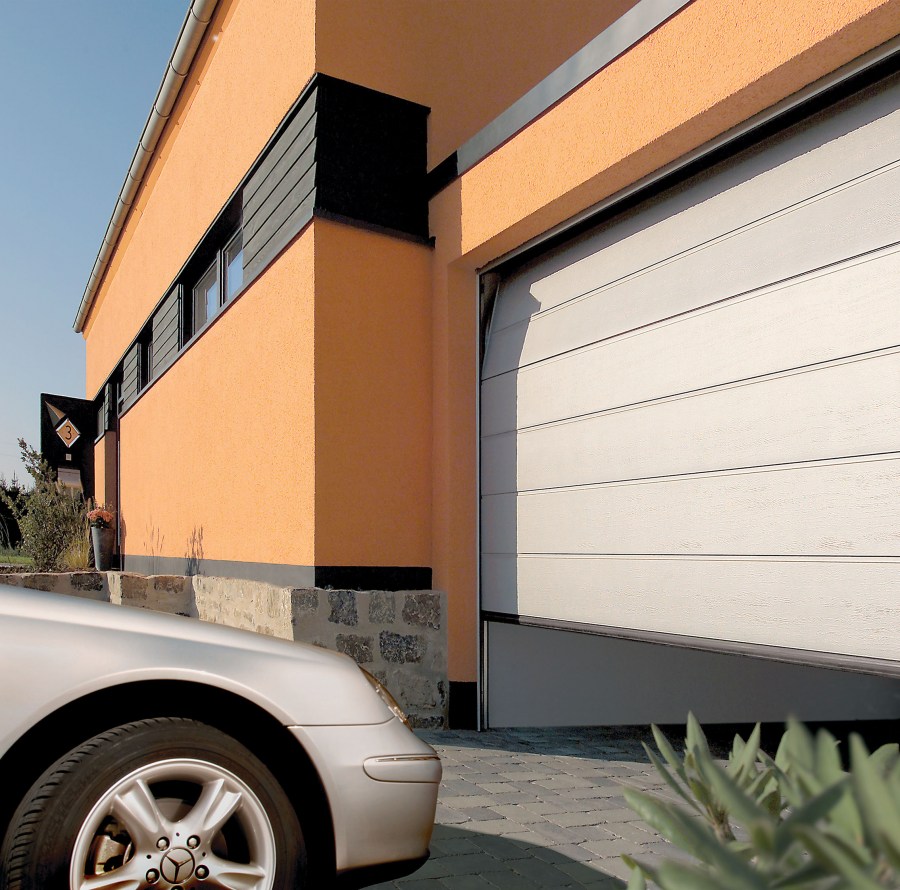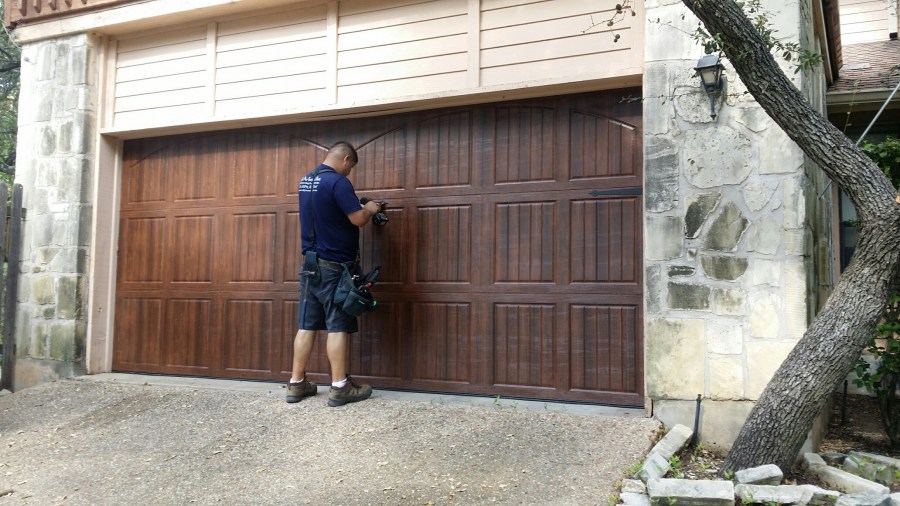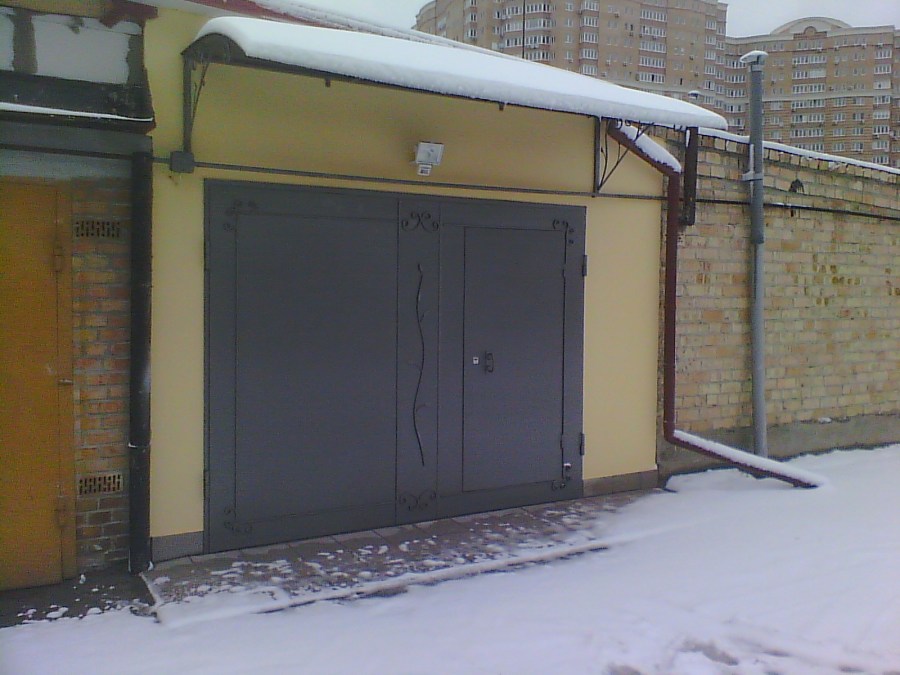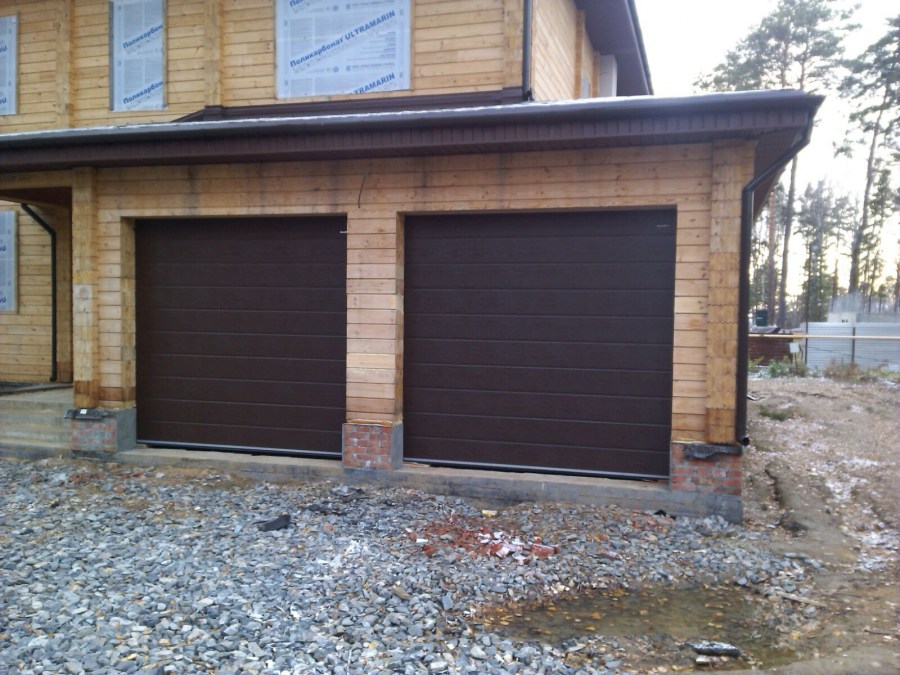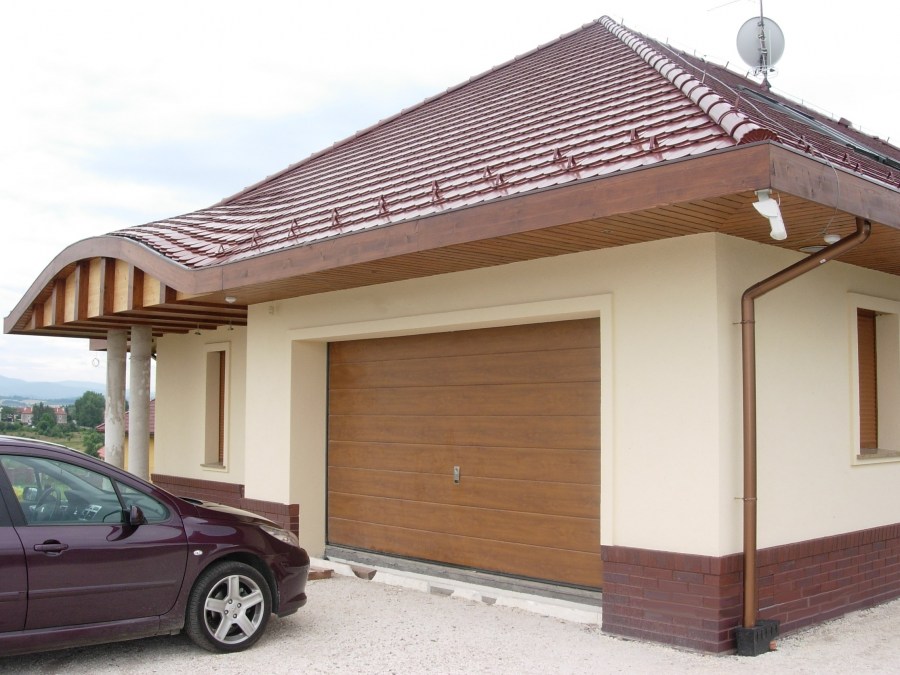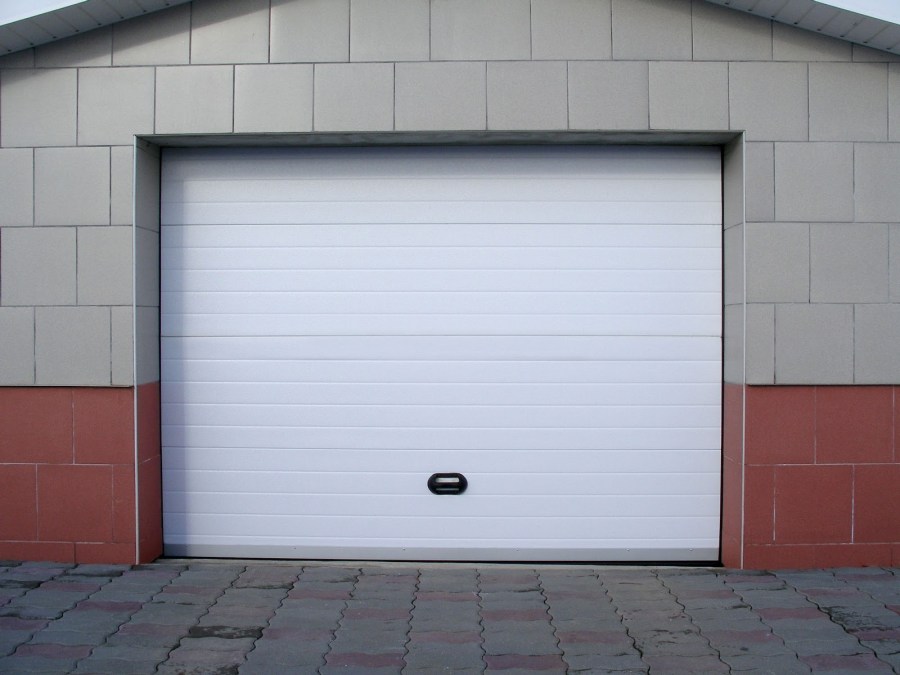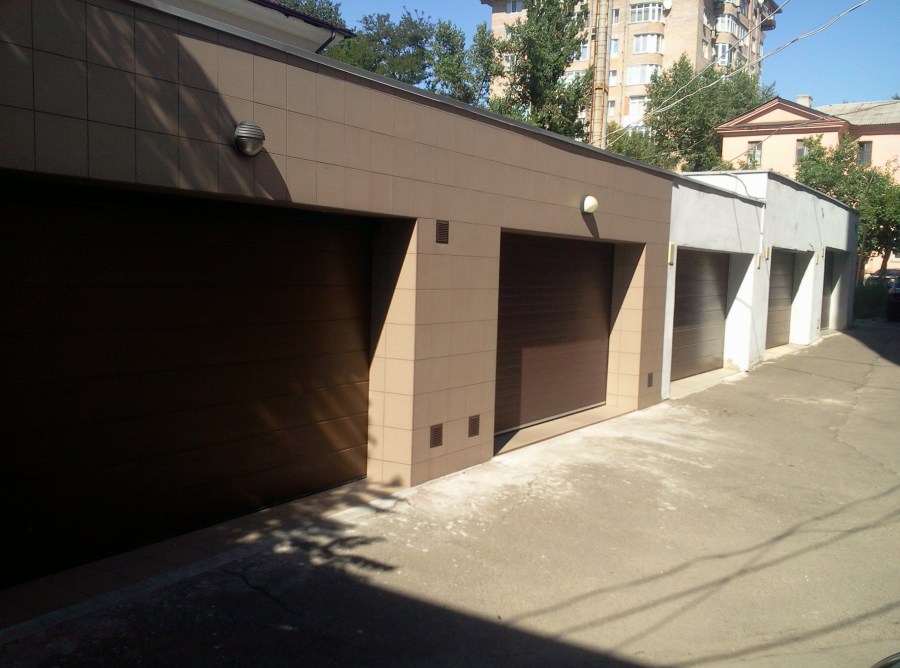Garage doors - sectional and swing options. 100 photos of insulation and do-it-yourself installation
For every motorist, a garage is a must-have and indispensable building. It provides the car with protection from adverse weather conditions and safety from intruders. Often in private sectors it is even attached to the main dwelling.
Regardless of whether the garage is in private territory or is part of a cooperative, the most important function in it is the gate. Their design depends on individual preference and room size.
There are two options: to make the gate with your own hands, which will meet all the necessary requirements of the owner or purchase ready-made ones.
Functional classification
Gates for the garage can be of different types. There is no consensus on which of them is better or more convenient. Some bribe with their reliability, others with appearance and innovation in use.
Swing gates
This is a reliable conservative option. Very easy to install, do not require large time and material costs. They consist of several iron sashes tightly attached to each other suspended on hinges. The frame for them is made of a steel corner. Often a doorway is cut out in one of the parts. A simple mechanism allows you to install the entire structure yourself.
Retractable
Consist of several or one leaf, when opening the gate is pushed to the side parallel to the fence or the wall of the garage. Installed in large garages, hangars, with entrance to the site.
Free play requires space. The mechanism is complex, it has many nuances, the installation of such a gate will require the help of a specialist.
Lifting gates
One-leaf gates, opening, rise up under the ceiling and become in a position parallel to the floor. Move on the articulated lever type. They are considered compact, it does not take much space to open them.
A good choice for a small garage, in the case when it is heated, under adverse climatic conditions, the mechanism may seize and block.
Sectional Garage Doors
Sectional garage doors are very modern, convenient to use, installed only by professionals.
When opening, they move along the guides and drive up under the ceiling. Consist of refracting sections moving with a spring mechanism. Work by chain transmission.
Rolls
Rolling gates are not considered reliable, difficult to install, owners rarely choose this type. They consist of separate aluminum plates; when opened, they rise to the ceiling and fold into a special box. For normal functioning favorable climatic conditions are required. And also protection or protection against vandals.
Under each description are the corresponding photos of the garage door.
It is possible to automate and control all input structures using the remote control mounted in the keychain.
When choosing a suitable gate, it is necessary to take into account such characteristics as practicality, durability, breaking resistance, ease of use and aesthetic appearance.
If the garage is not heated, swing gates that work perfectly even at low temperatures are the best choice.
Motorists with special knowledge, versed in the installation, themselves can develop a project, make a drawing, purchase the necessary materials and completely create a structure. Although you have to work hard, performing all the technical features of the assembly, so that the result is pleased with the quality and high functionality.
Design and drawing
First you need to determine the size of the gate, it depends on the height and width of the garage and the car itself. A sketch is drawn on a piece of paper with a pencil and a ruler, showing the layout and size of the garage. A comfortable entry space is considered to be 2.5-3 m wide and up to 2.5 m high.
The distance from the frame to the perpendicular wall is ideally at least 80cm. Entry and exit must be unobstructed and safe for cars. At least 30 cm should separate the edge of the machine to the nearest wall.
Construction process
For the manufacture of metal swing gates, it will be necessary to weld a metal frame, make the sheathing of sheets, install racks, hinges, locks, locks and latches. Necessary tools and materials:
- Bulgarian;
- welding machine;
- roulette;
- level;
- square;
- metal corner;
- iron sheets;
- steel strips;
- reinforcing rod;
- gate valve;
- profile (e.g. 60x30 or 60x20);
- reinforced loops;
- locks
After all measurements have been taken accurately, frame production can begin. For garage doors, it includes an external and internal frame.
Making a mounting frame
- Prepare frame elements. From a metal corner with a grinder, cut four segments with a size corresponding to the height and width of the garage opening.
- Lay out the blanks on a flat space, in the form that the finished frame should look like. Using a square, carefully measure the diagonals, adjust the angles to 90 degrees.
- Overlay the edges of the iron corners and weld together. This method is more durable, in comparison with welding in one plane. Grind the seams with a grinder for a snug fit of the gate to the frame.
- So that the steel corner does not lead, and the frame remains rigid, metal scraps should be welded into vertical “levers”.
Frame
The frame in size should be slightly smaller than the door frame, metal sashes are attached to it, for which you can use a rectangular profile of 60 * 20 mm or also a steel corner.
From any suitable material, make four segments 10-15 mm smaller than the dimensions of the frame height. Due to this, the movement of the wings will not be difficult. If there are two leaves, cut four segments corresponding to the width of the gate, halved and reduced by 30-35mm.
On a flat surface, it is better inside the finished frame, check the right angles and weld the frame.
Gates
The most common material for making garage door leaves is steel sheet. Running thickness 2-4 mm. The height of the leaves should exceed the height of the garage opening by 3 cm and to overlap, by 2 cm differ in length from each other.
First, the corners and the middle of the sheet are welded, then, with an interval of 10-15 cm, the rest of the sheet is spot-wound. To avoid deformation, cut off excess welding in the corners.
Then reinforced hinges are welded.The lower part to the frame, and the upper to the sash.
From reinforcement and metal strips, it is possible to strengthen the fastening by welding a strip of about 6 mm to the upper half of the loop and to the sash. The fittings are welded inside.
When everything is ready, the corners are even, everything is securely fastened, the doors open without hindrance and close tightly, you can start installing the gate.
Installation
First, it is necessary to attach the outer and inner parts of the frame to the slopes of the garage opening with metal pins. The ends of the pins are trimmed, ground with a grinder and painted over.
Using metal plates (jumpers) at a distance of 60 cm, the outer and inner frames are fastened.
At the end, the sashes are hung, the free movement of the gate is checked.
To prevent the gate from skewing and protecting them from the harmful effects of wind and rain, vertical locks should be installed, they will provide reliable fastening. It is also required to stick a seal for maximum fit of the flaps to the frame.
To protect the canvas from adverse conditions and destruction, the finished gate is primed and covered with several layers of oil paint.
Locks
To protect the garage use padlocks, mortise or use pin stoppers and bolts. The stopper is a part of the pipe into the cavity by which a metal rod is immersed. It should pass through a loop welded to the gate and pierce the floor or ceiling. Basically, with the help of a stopper (constipation), one leaf of the gate is closed, an internal lock crashes into another.
Outside, it is desirable to strengthen the protection with a padlock, which is threaded into loops welded to the edges of two wings.
Locks require timely careful maintenance and protection against weather conditions and corrosion.
Garage door insulation
To insulate the gates in the garage, foam is often used. Sheets of insulation material are laid out on the inner casement cages and fixed with plywood or lining.
You can make a wooden crate, lay it with PSB-S polystyrene foam or mineral wool and seal it with facing plates. The main thing is to fill all the airspace well.
Additionally, inside the garage, you can install a plastic curtain or hang a tarp.
After conducting insulation work, do not forget about good ventilation.
Making a gate takes about 2-3 days of work, and as a result, unique sizes and a special design are obtained. Do-it-yourself work improves self-esteem and improves mood.
Photo of the garage door
Water heater for a summer residence: 75 photos of the best choice for a summer residence
Sprinklers: 125 photos of the best automatic irrigation systems
Gutter system: 85 photos of the best projects and DIY installation
Join the discussion:
